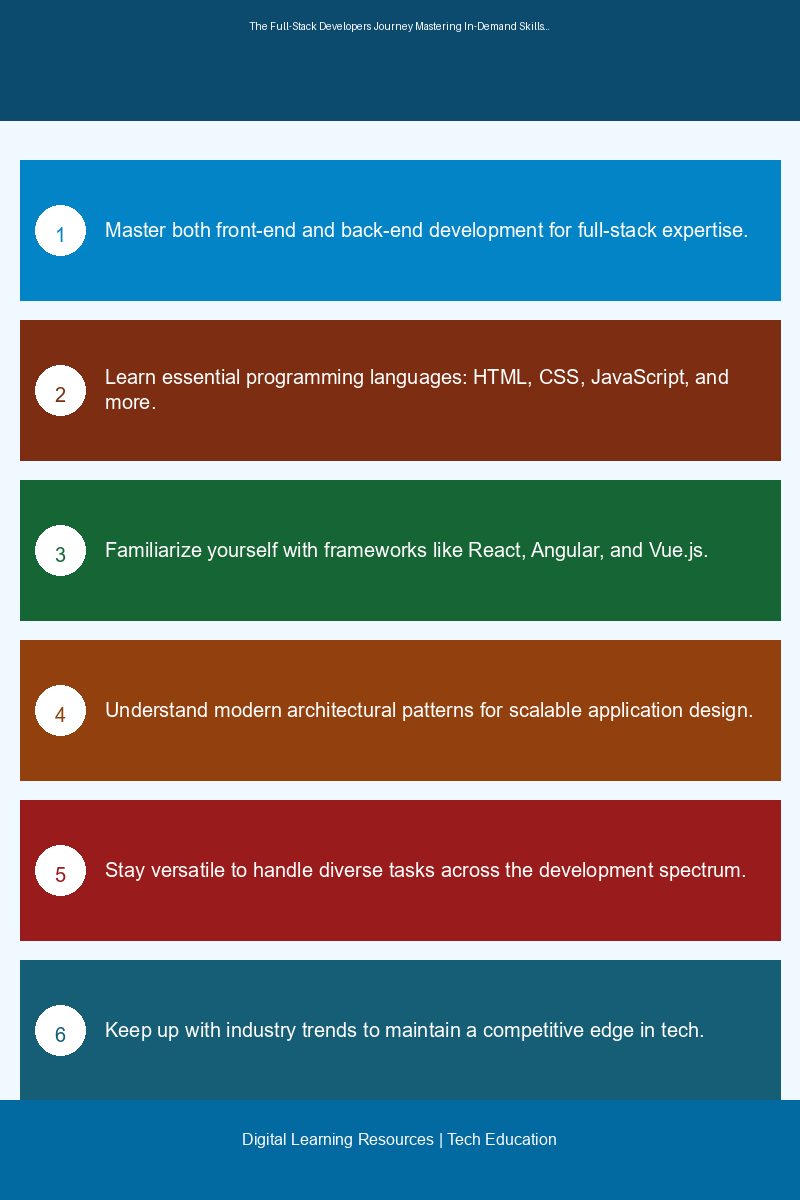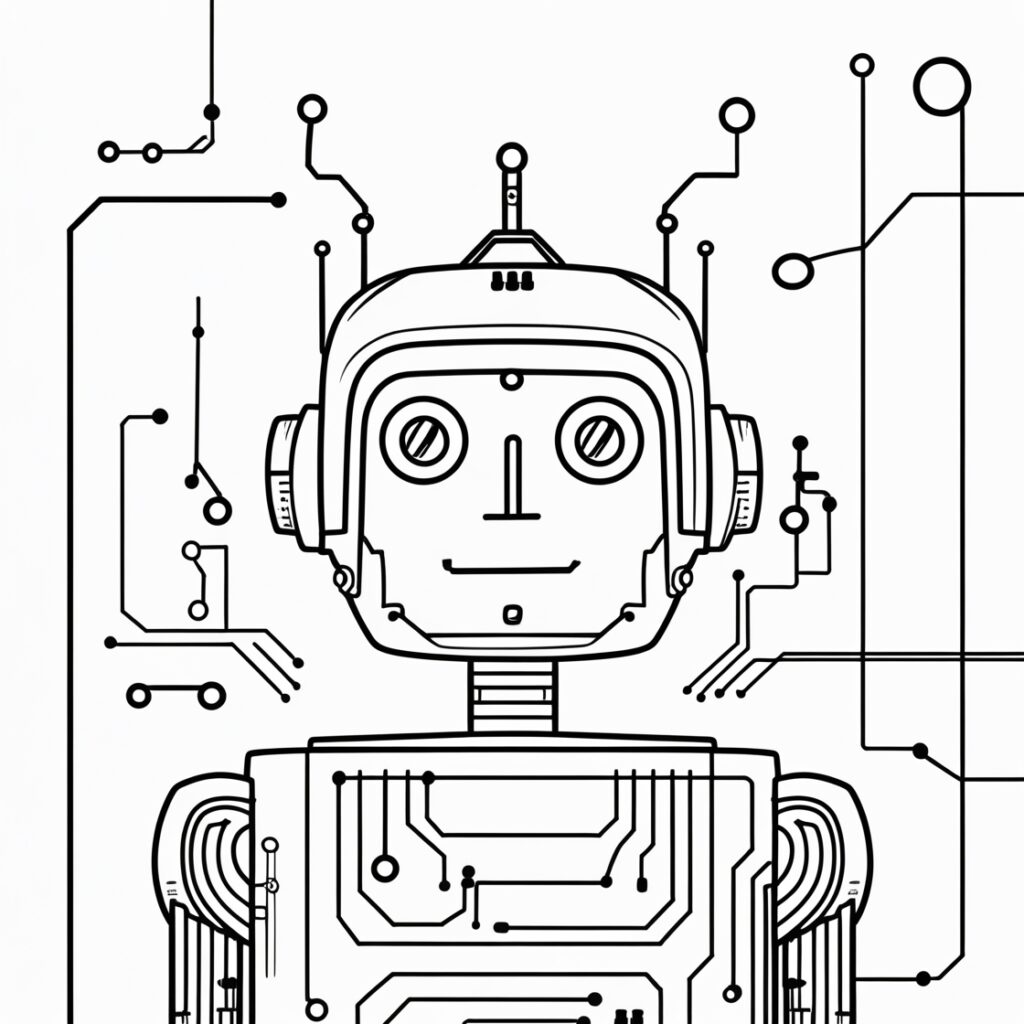In today’s fast-paced digital world, the role of a full-stack developer has become increasingly vital. This blog post delves into the essentials of full-stack web development, providing insights into technical skills, learning paths, industry trends, and practical applications. By the end, you’ll have a comprehensive understanding of how to navigate your journey as a full-stack developer and stay competitive in the tech landscape.
Key Takeaways
- Full-stack web development encompasses both front-end and back-end development.
- Mastering essential programming languages and frameworks is critical.
- Understanding modern architectural patterns is key to building scalable applications.
- The industry demands versatile developers capable of handling both front-end and back-end tasks.
Technical Background and Context
Full-stack web development refers to the ability to work on both the front-end and back-end of web applications. This dual expertise allows developers to create comprehensive solutions that are responsive, efficient, and user-friendly.
Front-End Development: This aspect focuses on the user interface and user experience (UI/UX) of a website. It involves the design and implementation of visible features using technologies such as HTML, CSS, and JavaScript. Front-end frameworks like React, Angular, and Vue.js further enhance the development process by providing pre-built components and tools for creating dynamic applications.
📚 Recommended Digital Learning Resources
Take your skills to the next level with these curated digital products:
AI Enhanced Resume Builder
AI Resume Builder Flask App – Complete Source Code + PDF Tutorial + HTML | Digital Download for Designers
Learn AWS: Your First Cloud Application
Learn AWS: Your First Cloud Application
📊 Key Learning Points Infographic

Visual summary of key concepts and actionable insights
Comprehensive SAT Prep: 470+ Vocabulary Words
Comprehensive SAT Prep: 470+ Vocabulary Words
Master DevOps in Practice – 50 Essential Topics for Engineers (PDF eBook)
Master DevOps in Practice – 50 Essential Topics for Engineers (PDF eBook)
The Ultimate Keyboard Shortcut Guide 49 Software Cheat Sheets in One PDF Bundle
The Ultimate Keyboard Shortcut Guide 49 Software Cheat Sheets in One PDF Bundle
Back-End Development: On the other hand, back-end development deals with server-side software, data processing, and application logic. This includes managing databases, server configurations, and APIs. Popular back-end frameworks such as Node.js, Django, and Ruby on Rails streamline the development workflow, allowing developers to build robust server-side applications.
Communication between the client-side application and the server happens through HTTP requests, enabling seamless data exchange and user interactions.
Practical Applications and Use Cases
Understanding both front-end and back-end technologies allows full-stack developers to create holistic applications. Take Instagram, for instance, a social media platform that excels in delivering a smooth user experience while managing vast amounts of data. Its architecture illustrates how front-end and back-end systems interact effectively to support user engagement and content delivery.
Another example can be seen in eCommerce platforms where functionalities such as product listings, shopping carts, and payment processing require intricate back-end logic while maintaining an appealing and intuitive front-end interface.
Learning Path Recommendations
For aspiring full-stack developers, following a structured learning path is crucial. Here’s a recommended approach:
- Start with HTML, CSS, and JavaScript: Gain a solid foundation in web technologies.
- Learn Front-End Frameworks: Explore React, Angular, or Vue.js to build dynamic user interfaces.
- Dive into Back-End Development: Choose a back-end language (Node.js, Python, Ruby) and its respective framework.
- Database Management: Understand both SQL and NoSQL databases (MySQL, MongoDB) and how to integrate them with your applications.
- API Development: Learn how to create and consume RESTful and GraphQL APIs.
- Explore DevOps Practices: Familiarize yourself with deployment strategies, CI/CD pipelines, and version control (Git).
Industry Impact and Career Implications
The demand for full-stack developers is on the rise, driven by the need for versatile professionals who can manage both front-end and back-end tasks. Companies increasingly seek developers who can contribute to all aspects of a project, making full-stack development a valuable skill set.
Moreover, as technology continues to evolve, staying updated on the latest trends, tools, and methodologies is essential. This adaptability enhances your career prospects and positions you as a competitive candidate in the job market.
Implementation Tips and Best Practices
To succeed as a full-stack developer, consider these implementation tips:
- Build Real Projects: Apply your skills by creating personal or collaborative projects. Real-world experience is invaluable.
- Stay Updated: Follow industry blogs, forums, and communities to keep abreast of the latest technologies and practices.
- Practice Clean Code: Write maintainable, readable, and efficient code to improve collaboration with other developers.
- Focus on User Experience: Always prioritize the user experience in your designs, ensuring applications are intuitive and accessible.
- Utilize Version Control: Use Git for version control to manage code changes, track progress, and collaborate effectively.
Future Trends and Skill Requirements
The future of full-stack development is poised for exciting advancements. Some trends to watch include:
- No-Code and Low-Code Platforms: These tools are simplifying web development, enabling non-technical users to create applications.
- Cloud Computing: Knowledge of cloud services (AWS, Google Cloud, Azure) is increasingly important for hosting and scaling applications.
- Microservices Architecture: Understanding microservices will become essential as businesses shift towards more modular application structures.
- AI and Machine Learning Integration: Familiarity with integrating AI/ML features into applications will be a significant asset for developers.
Conclusion with Actionable Next Steps
Embarking on your journey to becoming a full-stack developer involves mastering a diverse set of skills and staying current with industry trends. Here are your actionable next steps:
- Enroll in online courses or workshops focused on full-stack development.
- Join coding communities to network and collaborate with other developers.
- Start building your portfolio by working on personal projects and contributing to open-source.
- Consider obtaining certifications in popular frameworks and technologies to bolster your resume.
By following these guidelines, you’ll position yourself as a sought-after full-stack developer, ready to tackle the challenges of the evolving tech landscape. Embrace the learning journey, and take the next steps today!
Disclaimer: The information in this article has been gathered from various reputed sources in the public domain. While we strive for accuracy, readers are advised to verify information independently and consult with professionals for specific technical implementations.
Ready to advance your tech career? Explore our digital learning resources including programming guides, certification prep materials, and productivity tools designed by industry experts.



